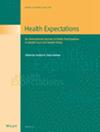Mental health-related structural stigma is a multifaceted issue that significantly impacts access to quality mental healthcare, particularly in low-resource settings like Nepal. Therefore, there is a clear need to understand the complexities and identify gaps for targeted interventions through evaluations of various dimensions of structural stigma within healthcare systems. This study aimed to assess the feasibility and applicability of a mental health-related structural stigma measurement framework through its implementation in Nepal's healthcare system.
A mixed-methods approach was employed, involving data mapping, key informant interviews and rating exercises with diverse stakeholders, including policymakers, health workers and people with lived experience (PWLEs). A visual analogue scale or Red/Amber/Green (RAG) rating scale was used to rate each indicator within the framework for the level of structural stigma based on the mapped information and their experiences. Data collection was carried out from May to June 2024.
Twenty key informants were interviewed for this exercise. Most indicators within the framework were endorsed as yellow, followed by red by participants referring to mid to high levels of structural stigma within the healthcare system. The findings also revealed that the stakeholders perceived the framework as acceptable and applicable for measuring mental health-related structural stigma in the healthcare system. However, challenges were noted regarding the clarity of some indicators, limitations of the three-coloured visual analogue rating and the need for comparator conditions.
The study underscores the measurement framework's value as a tool for identifying and addressing structural stigma in a mental healthcare system in a low-resource setting. Stakeholder engagement and contextual adaptation are crucial for its successful implementation. The insights gained can inform structural reforms and improve mental health service delivery, ultimately promoting greater equity and access for PWLEs.
This framework being assessed in this study (FOCUS-MHS) was developed through extensive consultation with People with Lived Experiences (PWLEs) in Nepal and globally with the Global Mental Health Peer Network along with other stakeholders. Identification of documents, policies and studies, along with qualitative information mapped within the indicators, was informed by PWLEs involved in local study sites and by policymakers and health administrators. The reflections of the study participants—PWLEs, health administrators and policymakers, have guided further refinement of the framework for future use.



